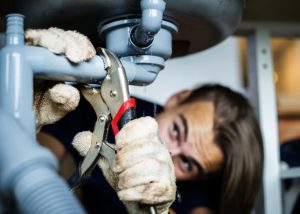6 Ways to Find Concealed Water Leaks in Your House
6 Ways to Find Concealed Water Leaks in Your House
Blog Article
What're your beliefs on Finding hidden leaks?

Early detection of leaking water lines can minimize a prospective disaster. Some little water leaks might not be visible.
1. Take A Look At the Water Meter
Every house has a water meter. Inspecting it is a surefire manner in which helps you find leakages. For starters, switch off all the water sources. Make certain nobody will certainly flush, utilize the tap, shower, run the washing equipment or dishwashing machine. From there, most likely to the meter and also watch if it will transform. Since nobody is utilizing it, there ought to be no motions. That shows a fast-moving leak if it relocates. Likewise, if you discover no changes, wait a hr or 2 and inspect back once more. This means you may have a sluggish leakage that could even be underground.
2. Check Water Usage
Examine your water costs and also track your water consumption. As the one paying it, you must notice if there are any kind of disparities. If you spot sudden changes, despite your usage being the same, it indicates that you have leakages in your plumbing system. Keep in mind, your water costs need to fall under the exact same range on a monthly basis. A sudden spike in your expense indicates a fast-moving leak.
A constant rise every month, also with the very same routines, shows you have a slow leak that's additionally gradually intensifying. Call a plumber to thoroughly check your home, particularly if you feel a warm location on your floor with piping underneath.
3. Do a Food Coloring Examination
When it involves water usage, 30% comes from toilets. Test to see if they are running effectively. Decline specks of food shade in the storage tank and wait 10 mins. If the color in some way infiltrates your dish during that time without flushing, there's a leakage between the tank and also bowl.
4. Asses Exterior Lines
Don't fail to remember to examine your outside water lines also. Needs to water seep out of the connection, you have a loosened rubber gasket. One tiny leakage can waste bunches of water and surge your water costs.
5. Examine the scenario and examine
Home owners should make it a practice to inspect under the sink counters and also even inside cabinets for any type of bad odor or mold and mildew development. These two red flags suggest a leakage so punctual attention is required. Doing routine assessments, also bi-annually, can save you from a significant trouble.
Examine for discolorations as well as deteriorating as many devices and also pipes have a life expectancy. If you believe dripping water lines in your plumbing system, don't wait for it to escalate.
Early discovery of dripping water lines can alleviate a possible disaster. Some little water leaks may not be noticeable. Inspecting it is a surefire means that assists you find leaks. One little leakage can squander lots of water as well as spike your water bill.
If you suspect dripping water lines in your plumbing system, do not wait for it to escalate.
How to Know If Your Home Has a Hidden Leak
Water Meter Reveals Inexplicable Water Usage
If you’d like to test whether or not there’s a leak somewhere in your home, you can do this using your water meter. Here is how to conduct the test:
Don’t use any water in your home for at least 30 minutes; this also means not turning on faucets or water-using appliances.
Go outside, and check your water meter for activity.
If your water meter shows that there was activity, even though no one was using any water, this proves that there is a leak in your home.Visible Mold or Mildew Growth
Leaks behind walls create moist, dark environments that allow mold and mildew to grow and thrive. Eventually, you might see mold growth forming on the wall closest to a hidden leak.
If mold is growing in an area that receives a high amount of moisture, such as a bathroom, it may simply be an indication that better ventilation is needed. However, if you see mold growth on a wall or the ceiling in an area where you would not expect, you probably have a hidden leak.
Musty, Mildew Odor
Sometimes you might not be able to see the mold or mildew that is growing as a result of a leak. However, the smell can give the problem away just as easily. If you catch a whiff of something musty, there’s a good chance that old water is collecting somewhere in your home that you can’t see.
Stained/Warped Walls, Ceilings, or Floors
When your home soaks up water, a variety of red flags can become visible, including ceiling stains, bubbling drywall, warped walls, and sagging floors. While these issues can be caused by excess humidity, they can also be signs that a pipe or plumbing connection has started leaking behind your walls.
Inexplicably High Water Bill
After a while, you get a general sense for what your water bill should be. If you own a pool or sprinkler system, your bill will tend to be higher during summer. However, if you receive a water bill that seems especially high, and you can’t figure out what caused it, then you may have a hidden leak somewhere that’s increasing your bill.
https://www.plumbingjoint.com/blog/2019/july/how-to-know-if-your-home-has-a-hidden-leak/

I found that piece of writing about Top leak detection hacks while doing research the web. Sharing is good. You never know, you might be helping someone out. Thank you for going through it.
Report this page